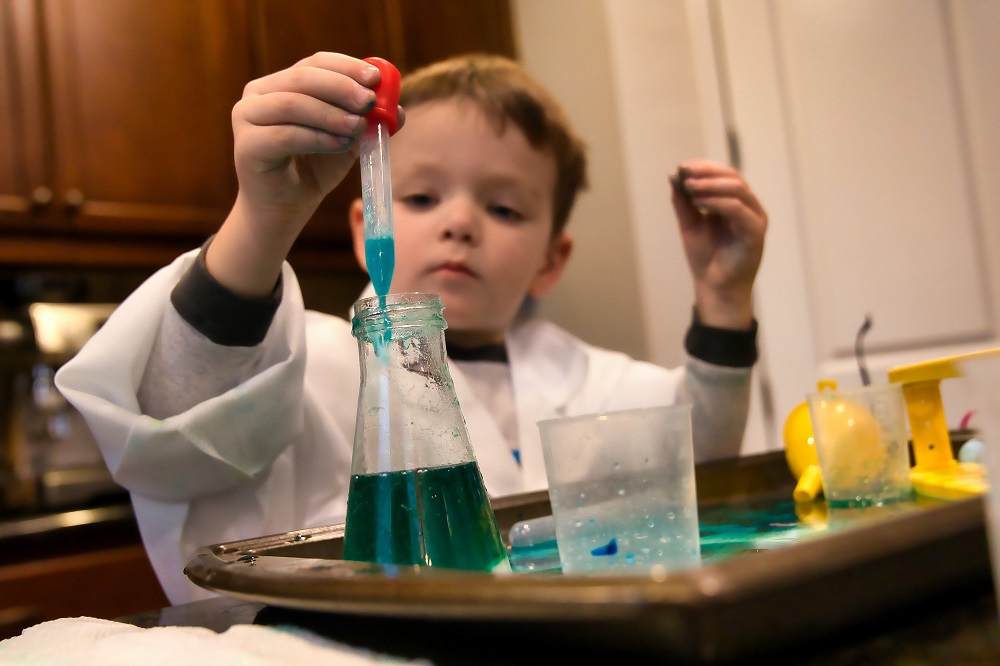Try this Fun and Easy Primary Science Experiment at Home!

Take the monotony out of PSLE Science revision with this fun experiment you can do at home! Learn about how microorganisms function and reproduce by making a blow-up balloon using yeast. If you are looking for an interesting activity to enhance your understanding of the PSLE Science syllabus, why not give this home experiment a try?
Introduction
Yeasts are single-celled microorganisms classified under the fungus kingdom. We learn in primary Science that living organisms need air, food and water to survive. Just like people, yeast needs air and food, and it releases carbon dioxide as a waste product. Have you ever wondered why bread has holes in it? Most bread is baked using yeast, which is kneaded into the flour and starts making tiny gas bubbles. These gas bubbles are actually carbon dioxide as a waste product, and they look like little holes in bread dough. When the bread is baked in an oven, the yeast dies, leaving behind these pockets of air which are the holes we see in bread.
Through this experiment, you will carry out variable testing to observe how different temperature levels affect how quickly yeast grows. This will be demonstrated through the carbon dioxide produced by yeast, which can be used to inflate a balloon. Be sure to make a hypothesis before carrying out the experiment!
Materials Required
To run this experiment, you will need the following items:
- Four packets of yeast (you should be able to find these at the supermarket)
- Four empty plastic drink bottles
- Four balloons, not inflated
- Four teaspoons of sugar
- 500 ml of chilled water
- 500 ml of warm water
- Four measuring cups (for measuring out the water)
- A marker (for labelling your plastic bottles)
- A stopwatch
Experiment Steps
First, divide the chilled water into each of the measuring cups as follows:
- Cup 1: 50 ml
- Cup 2: 100 ml
- Cup 3: 150 ml
- Cup 4: 200 ml
Next, pour enough warm water into cups 1, 2, and 3 so that the total amount of water in them reaches 200 ml. Once you have all four measuring cups of water ready, pour the contents of each cup into a different plastic drink bottle and label the bottles with the proportion of cold to warm water that you used for each one. Yeast is in an inactive state when it is cold and dry, which is why we need to put water in the bottles to activate the yeast.
Yeast also needs nutrition to grow, so we’ll be giving it sugar. Add one teaspoon of sugar to every bottle, and gently swirl the bottles a few times to dissolve the sugar.
You can now add the yeast to the bottles. Put one whole packet of yeast into every bottle. Make sure to have your balloons ready, because right after you add the yeast, you need to quickly stretch a balloon over the mouth of each bottle. The yeast will become active once it is in water, and we want to ensure that as little air as possible can escape once the yeast activates in order to obtain a more accurate result. Start the stopwatch when all bottles are covered with a balloon.
The yeast will have become active and started “eating” the sugar in each bottle. However, because yeast is a microorganism, they are too tiny to be seen unless they are put under a microscope. It may seem like nothing is happening for the first few minutes, but gradually, you should see the balloons start to expand and rise. This is happening because the yeast is giving out carbon dioxide, which fills the air in the bottle as well as the balloon. Which balloon do you think will rise first, and which will be the slowest?
Record the time on your stopwatch at which each balloon rises and stands up straight. Were the results the same as what you predicted? Why do you think the balloons rose at different times, and what did the water temperature of each bottle have to do with it?
After the experiment, try leaving the bottles alone for a couple of days to see what happens to the air in the balloons. Yeast has a short lifespan and the colony in each bottle will eventually die after some days. Do you think the air in the balloons will remain the same, increase, or decrease?
For an added bonus, try repeating this experiment with a new hypothesis – but this time, use different amounts of sugar for each bottle and keep the water temperatures the same. What can you tell about the effects of sugar and temperature on the growth of yeast? What do you think is an optimal condition for yeast to grow?


